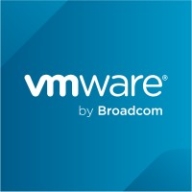

Red Hat CloudForms and VMware Tanzu Platform are competitive solutions in the cloud management and application modernization space. VMware Tanzu Platform often has an edge due to its more extensive feature set, making it a preferred choice for many users looking for robust application modernization capabilities.
Features: Red Hat CloudForms provides outstanding infrastructure management, multi-cloud support, and comprehensive monitoring. VMware Tanzu Platform stands out with Kubernetes-native operations, seamless integration with existing systems, and a strong emphasis on cloud-native application frameworks.
Room for Improvement: Red Hat CloudForms could enhance its application modernization features and streamline cloud-native deployments. It might also improve integration with proprietary systems. VMware Tanzu Platform may benefit from better pricing models and more community-driven support resources. Additionally, simplifying the learning curve for legacy system users could be valuable.
Ease of Deployment and Customer Service: Red Hat CloudForms offers a flexible deployment approach with robust community support, which facilitates integration across various environments. VMware Tanzu Platform provides streamlined deployment for cloud-native applications with competent customer service, enhancing the overall user experience.
Pricing and ROI: Red Hat CloudForms is noted for its cost-effectiveness and substantial ROI, which appeals to budget-conscious organizations. VMware Tanzu Platform, while involving higher initial costs, is perceived to offer superior long-term ROI through its advanced application development features and efficiency improvements.
| Product | Market Share (%) |
|---|---|
| VMware Tanzu Platform | 1.1% |
| Red Hat CloudForms | 1.5% |
| Other | 97.4% |


| Company Size | Count |
|---|---|
| Small Business | 4 |
| Large Enterprise | 7 |
| Company Size | Count |
|---|---|
| Small Business | 10 |
| Midsize Enterprise | 3 |
| Large Enterprise | 10 |
Manage container, virtual, private, and public cloud infrastructures
Managing a complex, hybrid IT environment can require multiple management tools, redundant policy implementations, and extra staff to handle the operations. Red Hat® CloudForms simplifies IT, providing unified management and operations in a hybrid environment.
As your IT infrastructure progresses from traditional virtualization toward an Infrastructure-as-a-Service (IaaS) model, CloudForms evolves, protecting your investments and providing consistent user experience and functionality.
VMware Tanzu Platform is designed for cloud-native development and management of Kubernetes, CI/CD processes, microservices, and containerized workloads. It supports deployments both on cloud and on-premises, providing centralized management via Mission Control.
VMware Tanzu Platform offers seamless integration with vSphere, ESX, and vSAN, supporting centralized cluster management and lifecycle management. The platform provides a GUI for monitoring CI/CD pipelines and network policies, enhancing multi-tenancy and Day 2 operations. Users can easily manage Kubernetes clusters, monitor applications, and integrate with tools such as GitHub, GitLab, Cloud Foundry, and Azure. It ensures compliance and security for service providers, financial institutions, and businesses.
What are the key features of VMware Tanzu Platform?
What benefits and ROI should users look for in VMware Tanzu Platform reviews?
Industries such as financial institutions, service providers, and businesses requiring rigorous compliance and security deploy VMware Tanzu Platform. These entities benefit from centralized management, streamlined DevOps processes, and integrated tools, enhancing their capabilities in cloud-native developments and containerized workloads.
We monitor all Cloud Management reviews to prevent fraudulent reviews and keep review quality high. We do not post reviews by company employees or direct competitors. We validate each review for authenticity via cross-reference with LinkedIn, and personal follow-up with the reviewer when necessary.